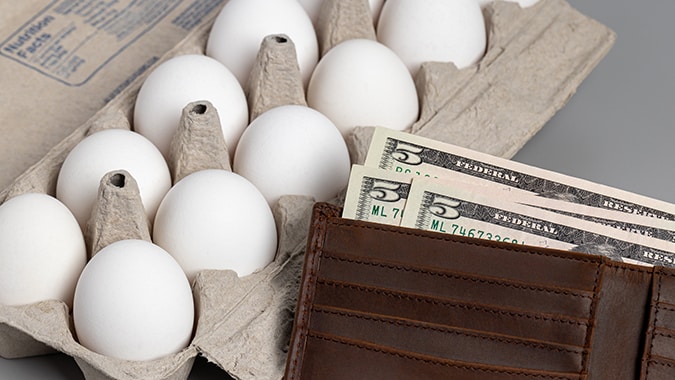Inflation in the United States accelerated more than economists had forecast in January, increasing a seasonally adjusted 0.5% for the month and pushing the annual inflation rate to 3%, according to the U.S. Bureau of Labor Statistics’ report released on Wednesday.
The shelter index rose by 0.4% in January, contributing nearly 30% to the overall monthly increase in prices. Meanwhile, rising gasoline prices (+1.8%) drove the overall energy index up by 1.1%. The index for food at home also saw a rise of 0.5% in January, with grocery prices increasing for dairy products, meats, poultry, fish, and particularly eggs.
The phenomenon of “egg-flation” made a significant return in January, with egg prices soaring by 15.2% for the month—the largest monthly increase since 2015. This surge in egg prices, attributed to shortages caused by the devastating avian flu affecting poultry flocks, accounted for about two-thirds of the overall increase in grocery bills. Over the past year, egg prices have skyrocketed by 53%.
The core index, which excludes more volatile food and energy costs, rose by 0.4% in January, exceeding the 0.2% monthly increase recorded in December. Other notable monthly cost increases included motor vehicle insurance (+2.0%), used cars and trucks (+2.2%), airline fares (+1.2%), and recreation (+1.0%). Conversely, clothing costs fell by 1.4%, while personal care (-0.5%) and household furnishings (-0.2%) also saw declines.
On an annual basis, the all-items index rose by 3.0% for the 12 months ending in January, surpassing the 2.9% inflation rate for the 12 months ending in December.
The core inflation rate (excluding food and energy prices) increased by 3.3% for the year ending in January, compared to a 2.3% rise for the 12-month period ending in December.
The shelter index rose by 4.4% year-over-year, marking the smallest 12-month increase since January 2022. Other core index items with significant increases over the past year included motor vehicle insurance (+11.8%), medical care (+2.6%), education (+3.8%), and recreation (+1.6%).
Investors and members of the Federal Reserve closely monitor core inflation, as it provides a clearer perspective on inflation dynamics and the economy by excluding the volatile food and energy sectors. Following the release of the Consumer Price Index (CPI) report on Wednesday morning, the stock market declined, with investors viewing the acceleration of inflation as a sign that the Federal Reserve is unlikely to lower interest rates in the near future.


